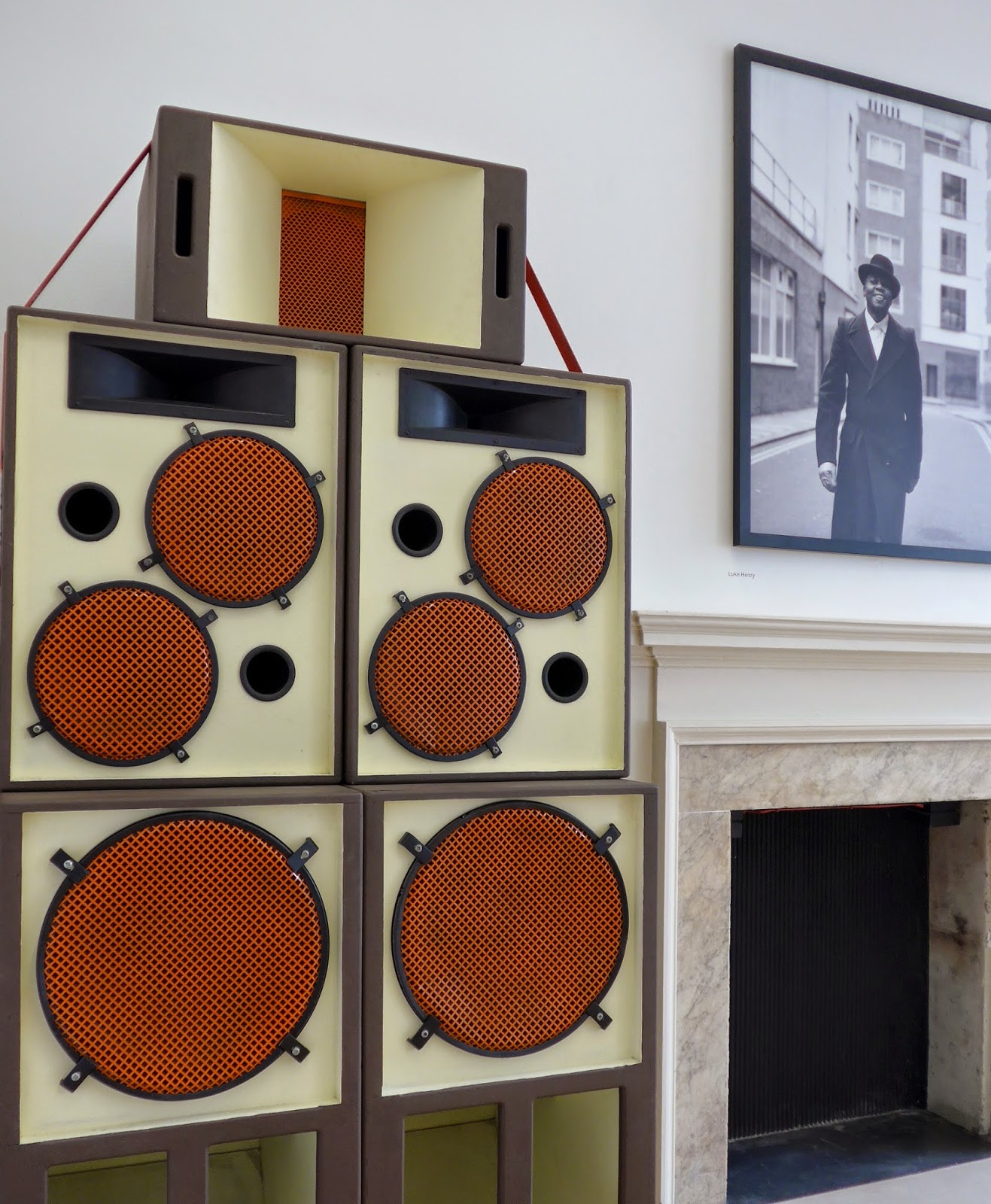Planning to go to the Return of the Rudeboy exhibition at Somerset House,
this was the first time I had ever worried about
what I was going to wear to see an exhibition about
"style, swagger and significance."
It didn't take long for me to reject the idea that I was never going to match, let alone compete with the Rudeboys, so I might as well go as myself, dressed in what I usually wear.
But I did have that haircut,
the one on the far right.
Quite a few years ago.
Quite a few years ago.
Return of the Rudeboy is not a retrospective, looking back at the Rudeboys of the 80s,
but contemporary photos of Rudeboy style today.
With its roots in Reggae,
photos in vintage suitcases are reminders of the journey and cultural heritage of the Rudeboy, from the West Indies.
These guys know how to dress.
From top...
...to toe.
If you visit feeling less than your best, in need of a bit of grooming,
this barber's shop will be open at selected times for
a bit of a trim or perhaps a new style.
That's what I call participatory.
Top visitor engagement.
How we respond to exhibitions can be very personal.
Things capturing our imagination.
For me, it was the textures I saw.
In the fabrics...
...and colours,
...and close ups.
An exhibition about Rudeboy style would of course, have to include music.
Every person photographed was asked to put together a playlist to be played in the exhibition.
It's not all photography...
...or men.
The lovely Pauline Black.
On My Radio!
Return of the Rudeboy celebrates the now, but referenced the 80s.
It took me back to Ska and 2 Tone. Wish I still had the badges.
I came home and made my own playlist,
my music from the early 80s.
I had all these tracks on 7" vinyl,
and if I didn't,
I spent Thursday nights with a tape-recorder held against the TV speaker,
the pause button pressed, ready to be released, telling my brothers to "shut-up", waiting for the exact moment when the Top of the Pops presenter stopped talking and the music started.
That's how playlists were made in the old days.
If you're interested...
Too Much Too Young -The Specials
Tears of a Clown - The Beat
Mirror in the Bathroom - The Beat
On My Radio - Selecter
Ghost Town - The Specials
Lip Up Fatty - Bad Manners
One Step Beyond - Madness
Return of the Rudeboy is on at Somerset House until 25 August
Free admission
Details on the website, here.





























































